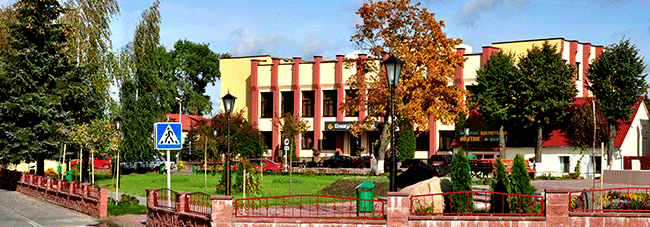Glubokoe regional executive committee
Regional Executive Committee
42 Lenina street, Glubokoye, 211800
8 (02156) 2 58 65
Fax: 8 (02156) 2 58 30

Regional Executive Committee
42 Lenina street, Glubokoye, 211800
8 (02156) 2 58 65
Fax: 8 (02156) 2 58 30

A museum exposition about the First World War has opened in Postavy. It occupies four halls of the Tyzenhaus Palace, BelTA learned from research associate of the Postavy Local History Museum Vadim Shishko.
“Postavy’s history is closely connected with the First World War. The town was on the front line for almost three years. All the items that are on display have been taken from the holdings of the Local History Museum. Many of the artifacts were found in the district, some were kept in families,” Vadim Shishko said.
The exposition consists of four parts. The first hall provides general information about the war, the second demonstrates German trenches, the third one Russian trenches, and the last one has a symbolic name Life and Death.
The exposition showcases many interesting artifacts such as fragments of the original German barbed wire with wood poles, ammunition, a glass flask, and a bottle with cleaning fluids for gas masks. “Gas masks were not actively used during the Second World War. They were widely used only during the First World War as gas attacks were frequent,” Vadim Shishko explained.
The fourth part of the exposition clearly demonstrates that the war was closely connected with everyday life. It showcases passports that the German authorities issued for the residents of the town of Lyntupy. Surprisingly, the documents contained not only the information about the holder and his photo, but also his fingerprints. The exposition also features all kinds of things left by the soldiers: an ice skate, beer bottles, sweets boxes, cigarettes, tin cans, etc.
“The First World War was a positional war in its essence. The soldiers were spending most of the time in trenches. Many people died because of the diseases caused by the cold, wet conditions and bad water,” Vadim Shishko explained.